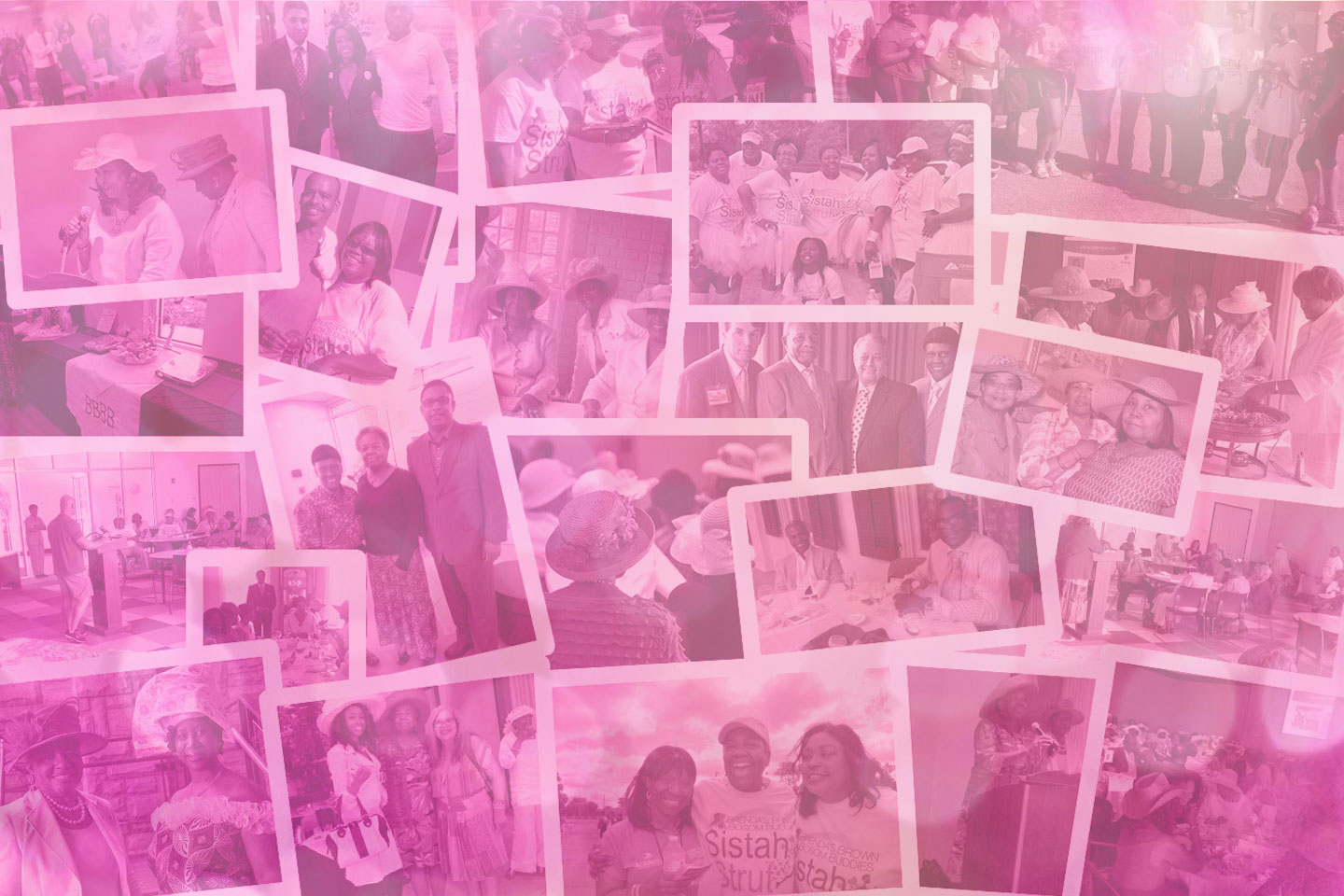HELPFUL BReAST CANCER INFormATIoN
411

Twice as many African-American women who have Breast Cancer die from it as opposed to Caucasian women, although fewer African-American women get the disease. Since 1989, deaths from breast cancer are down 5 percent for all women. However, the death rate remains disproportionately high for African-American women. That may be because we are less likely to get mammograms because we either think we won't get Breast Cancer or don't have access to care. A part of BBBB’s mission is to get the word out and instill in Women of Color ~ Awareness and Early Detection of this dreaded disease. Please join our efforts!
What is the risk of breast cancer for Hispanic American/Latina Women?
As an old saying goes, “No hay peor lucha que la que no se hace.” There isn’t a worse fight than the one that is not made. — Maria Yañez
The term “Latina” or “Hispanic American” includes several nationalities: Mexicans, Cubans, Puerto Ricans, Central Americans (Nicaraguans, Salvadorans, Guatemalans, Hondurans, Panamanians, Costa Ricans, etc.), South Americans (also several countries) and persons of Spanish ancestry.
Breast Cancer is the most commonly diagnosed cancer and the leading cause of cancer death among Hispanic American/Latina women. Although Breast Cancer is diagnosed about 30 percent less often among women of Hispanic origin, it is more often diagnosed at a later stage (when the disease is more advanced) than when found in non-Hispanic women. BBBB is reaching out to ALL Women of Color and is hopeful of a warm exchange of ideas and information that will assist in ‘Moving On”, “Getting On”, and “Living On”! Please join us!
How Breast Cancer affects Asian American and Pacific Islander Women
To get through the hardest journey we need take only one step at a time, but we must keep on stepping.- Chinese proverb
The term, “Asian American” encompasses many groups: Asian Indian, Bangladeshi, Bhutanese, Burmese, Cambodian, Chinese, Filipino, Hmong, Indonesian, Japanese, Korean, Laotian, Malayan, Mien, Nepalese, Pakistani, Sri Lanka, Thai, Vietnamese, and several others. “Pacific Islanders” refers to people having origins or ancestors from Hawaii, Guam, Samoa and other Pacific Islands. Each ethnicity can be very different from the next, but research on cancer incidence has tended to combine many of these groups.
What is the risk of breast cancer for Asian American women?
The common belief that cancer is relatively rare among Asian Americans is untrue. Cancer has been the number one killer of Asian American women since 1980. Although Asian American women do not get breast cancer as often as most other ethnic groups in the United States, they do get it more frequently than their counterparts in Asian countries, who have the lowest overall breast cancer rates in the world. When Asian women migrate to the United States, their risk of developing breast cancer increases up to six times. BBBB is determined to make a significant difference in the lives of ALL Women of Color and welcome each and every one. Diversity is goal; togetherness is our aspiration! Please join us!
As an old saying goes, “No hay peor lucha que la que no se hace.” There isn’t a worse fight than the one that is not made. — Maria Yañez
The term “Latina” or “Hispanic American” includes several nationalities: Mexicans, Cubans, Puerto Ricans, Central Americans (Nicaraguans, Salvadorans, Guatemalans, Hondurans, Panamanians, Costa Ricans, etc.), South Americans (also several countries) and persons of Spanish ancestry.
The Hispanic population is the fastest-growing population and the largest minority group in the United States. Hispanic Americans make up approximately 12.5 percent of the U.S. population, and that number will increase to somewhere between 19 and 24 percent by 2050, according to the 2000 U.S. Census.
North Carolina’s Hispanic/Latino population is growing quickly as well. In 1990 there were estimated to be 76,726 Hispanics/Latinos living in North Carolina. By 2000 that number had more than quadrupled to 378,963 (U.S. Census). Those numbers are likely to be an underestimate because they do not take into account Hispanic persons of undocumented residency status.
Cancer research in Hispanic/Latina populations has been hindered by a number of factors and thus may not be entirely correct. Also, data from national cancer registries may not be accurate for Hispanic American/Latina women because, until recently, cancer registries have not collected data specifically on this population.
What is the risk of breast cancer for Hispanic American/Latina women?
Breast cancer is the most commonly diagnosed cancer and the leading cause of cancer death among Hispanic American/Latina women. Although breast cancer is diagnosed about 30 percent less often among women of Hispanic origin, it is more often diagnosed at a later stage (when the disease is more advanced) than when found in non-Hispanic women. This is true even when access to health care is adequate. Hispanic/Latina females also have the highest rates of cervical cancer of any ethnic group, including whites. Both of these distressing statistics are related to Hispanic/Latina women not getting adequate screening with mammograms, clinical breast exams and Pap smears.
What special challenges do Hispanic/Latina women face?
Lack of access to health care is a major barrier to early detection and treatment of breast cancer and one that many Hispanic women face. More often than any other group, Hispanic Americans/Latinos have no regular source of health care.
A high proportion of Hispanic women are uninsured (about 30 percent). Uninsured Hispanic women with breast cancer are more than twice as likely as other women to be diagnosed with breast cancer in advanced stages. The disease is more difficult to treat successfully when it is diagnosed in its advanced stages, and survival rates are lower.
Visit www.cdc.gov for more useful facts.
BRENDAS BROWN BOSOM BUDDIES
Follow BBBB on Instagram for the latest post, pictures and sightings.